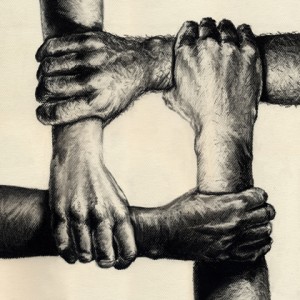Last week I began an 8 week journey with 28 prisoners in Johannesburg’s maximum security facility, colloquially known as ‘Sun City Prison’. The reason it is called ‘Sun City’ has got nothing to with it bearing any resemblance to the world-known holiday resort which looks like Las Vagas. On the contrary, this prison looks like any other correctional services buildings: it’s brown, flat and soulless with lots of concrete, barbed wire around it and a few shrubs trying to breathe in an atmosphere that hangs heavily around the silence of defeat. This facility gets its name because upon arrival, visitors used to have to park their cars in the first car park and they would get bussed to the various sections. This practice has changed now but the name remains in tact. There is a tragic irony in this name that appears so synonymous with the inmates’ stories.
Why would I go and spend my Monday mornings here for 8 weeks you may ask? I was asked by a friend if I would like to help her work for the department of correctional services to train the prisoners on self-esteem. She has been running this programme inside Sun City prison for 17 years now and the programme has been so successful that prisoners now have to participate in this programme in order to be eligible for parole. I have always been fascinated by what it would be like to be incarcerated and I am interested in self-esteem (anything to do with personal development), so it seemed an optimal opportunity for me. 
I really was not sure what to expect. I was nervous arriving at the prison. The first thing that struck me was how huge it is. 15 000 people live there. We parked outside one of the male sections. At the first gate you have to explain where you are going and what you are doing. Once inside you have to fill out all sorts of information asked of you by a very unfriendly prison warden. The thing that hit me first was the pungent smell of Jayes fluid. You then go through a series of ‘heks’ (gates) when the wardens condescend to open the gate for you. They pat down and check your bags (mine only had pencils and manuals for the training in it and no cell phones are allowed in) all in silence. All was well until I heard the last hek slamming shut behind me and I was inside the ‘spiral’. The ‘spiral’ is just that- a central quadruple column-like monolith from which the sections run.
The stark contrast from the silent outside to the staggeringly noisy spiral was profound and somewhat disconcerting. Without warning I was thrust into the middle of chaos behind bars. Around me were five or six sections all with grown men in orange uniforms shouting, talking, shaking the iron bars, wolf whistling at me, banging, laughing, glaring, watching, grinning in every direction.
I soon became nauseous. Somebody asked me what I would find hardest about being in prison and immediately my answer was the smell. The mixture of Jayes fluid and the odour of too many human bodies in a confined, airless space was overwhelming. Having said that, the prison was surprisingly neat and clean. I was taken down into the bowels of the prison where we would conduct our workshop.
The prisoners were remarkably disciplined and participatory. They were also articulate, insightful, honest and eager to know more. As I drove away I found it difficult to reconcile their daily lives with their willingness to grow with self-esteem. Granted the programme is voluntary and I am sure they all have their own individualised reasons for wanting to be part of it. I am curious to know how they do this. Perhaps that is what I will find out over the coming weeks.


